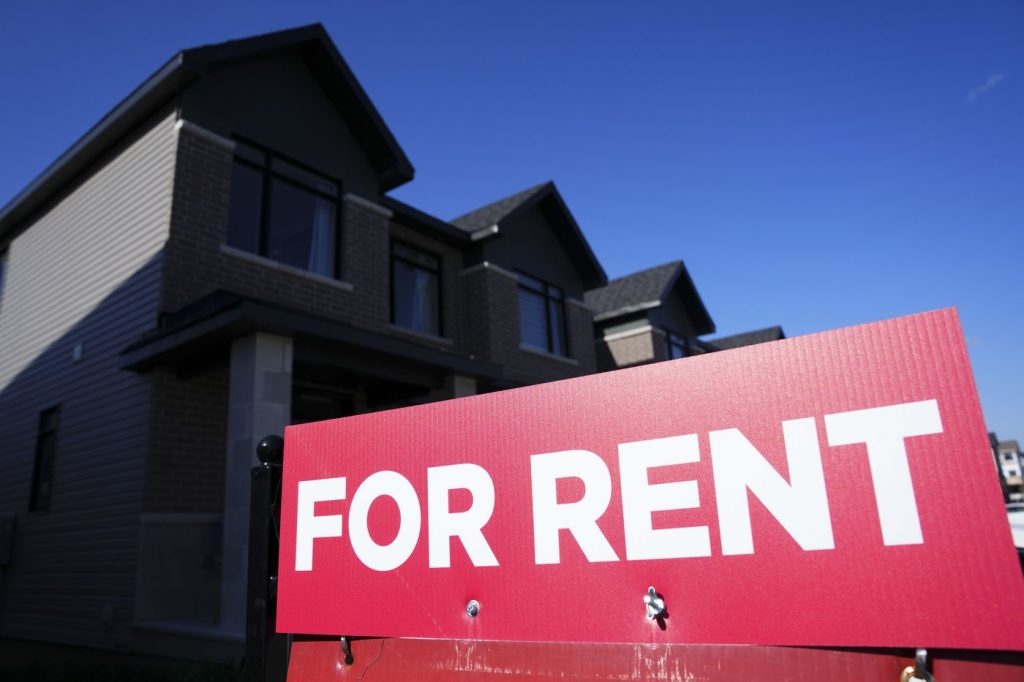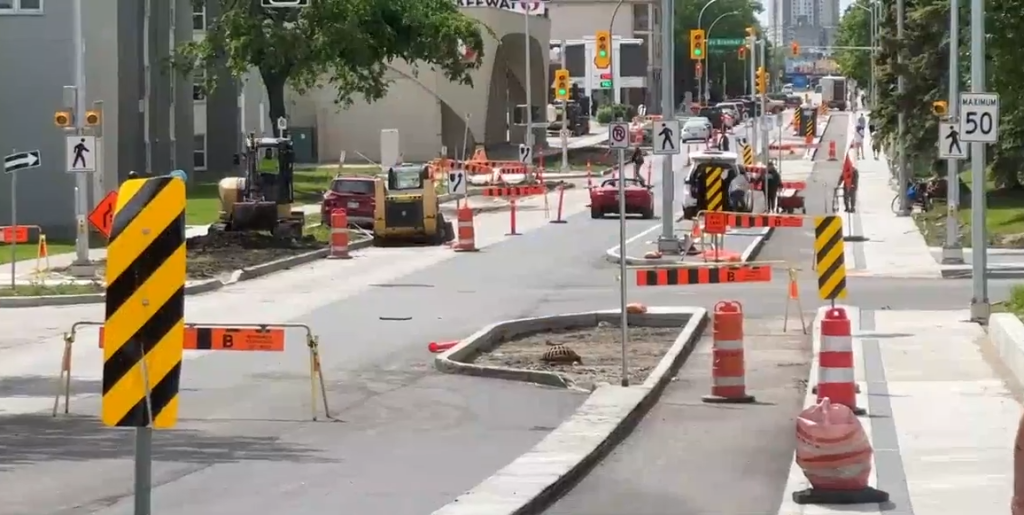‘Turning point’: Rent prices should see relief this year, but markets still tight

Posted January 26, 2025 5:00 am.
For Canadian renters, it may feel like the years since the COVID-19 pandemic have brought one hit after another.
After a 4.6 per cent increase in the average asking price of a rental unit in 2021, monthly payments surged 12.1 per cent year-over-year in 2022, according to data from Rentals.ca and Urbanation.
Then in 2023, asking rents increased by an average of 8.6 per cent.
However, experts say the rental market across the country seems poised for a cool-down in 2025 as more supply opens up and some look to buy their first home.
Whether various regions experience outright declines in rents or simply decelerate in their growth, the rapid increases of recent years are unlikely to continue in 2025.
“This comes after record-breaking growth in 2022 and 2023. Rental prices are so expensive, like, they’ve blown up,” said Rentals.ca spokesperson Giacomo Ladas.
But data from his platform shows a turnaround is already underway. Average asking rents fell 3.2 per cent nationally to $2,109 in December year-over-year, marking a 17-month low.
“What we’re seeing is tons of movement. Incentives are now coming back into units.”
October marked the first month in three years in which the asking rent for units across Canada fell, RBC economist Rachel Battaglia said in a report, led by declines in the two most expensive cities: Toronto and Vancouver.
“We’re at a little bit of a turning point,” Battaglia said in an interview.
Experts point to a number of factors at play. On the demand side, economic and labour challenges have meant fewer people are seeking new rentals.
“People have been trying to stay put,” said Tim Hill, a real estate agent with Re/Max All Points Realty in Vancouver.
“If they didn’t have to, a lot of people just simply weren’t moving. If they had a good monthly rent, they were staying there for as long as they possibly could.”
Subdued demand is also likely to come from slowed population growth after the federal government reduced immigration targets.
“Newcomers do make up a disproportionately large share of renters,” Battaglia said.
“Not only that, but we have a weakening labour market too, which could be bringing more households to bundle or delay that move out into rental housing … I suspect there are fewer younger individuals moving out of their parents’ house into rentals, or maybe they’re rooming with others.”
TD economist Rishi Sondhi predicts purpose-built rent growth will ease to a range of three to four per cent this year.
In a forecast earlier this month, he said the effect of falling interest rates would also be felt by renters looking for a new lease — lower borrowing costs will likely lure more people to buy a home, leading to less competition for rentals.
“Interest rates are also likely to push lower in 2025, helping renters make the transition to home ownership,” Sondhi said in the report.
“What’s more, falling interest rates should lower costs for landlords, reducing the pressure to pass through these costs to rents.”
Forecasts say the rental market will also look more attractive in 2025 thanks to new supply opening up.
Last year marked Canada’s largest gain of purpose-built rental supply in more than three decades, said Canada Mortgage and Housing Corp. in a recent report, and Sondhi added “another flood” is slated to reach completion this year.
The federal housing agency said the average rent for a two-bedroom purpose-built apartment grew 5.4 per cent to $1,447 in 2024, compared with an eight per cent increase in 2023. (CMHC’s report examines the cost of actual rent payments, rather than listings of asking prices, which are often higher.)
Meanwhile, Canada’s supply of purpose-built rental apartments grew 4.1 per cent year-over-year.
“It’s definitely a little bit of a breath of fresh air. That said, the rental markets across Canada are still very, very tight,” said CMHC deputy chief economist Tania Bourassa-Ochoa in an interview.
She noted there is a higher vacancy rate for newer, more expensive units, while that of more affordable properties is “still extremely low.”
“When we’re thinking about what does that mean for renters? Ultimately, affordability challenges are definitely still there, and in many cases, affordability has even worsened.”
Ladas said most major cities are still undersupplied when it comes to rental stock, meaning it will be difficult to sustain any relief that 2025 brings for tenants.
“The first half of 2025, at least, I think we can expect … the most affordable markets will continue to see higher demand and the most expensive markets will continue to see lower demand, and rents are going to keep coming down,” he said.
“But I think that these rental prices coming down should be looked at more as a temporary thing.”
He noted that new high-rises take years to build, and many that opened up last year were the result of projects that began when borrowing costs plummeted during the pandemic.
High interest rates over the past two years — prior to the Bank of Canada’s ongoing cutting cycle — may put a damper on that construction momentum.
“We’re going to see long-term undersupply of units continue,” Ladas said.
CMHC said earlier this month the total number of housing starts in 2024 rose two per cent compared with 2023, helped by historically high rental construction levels.
The country’s six largest census metropolitan areas saw a combined drop of three per cent in 2024 as starts in Vancouver, Toronto, and Ottawa moved lower, while Calgary, Edmonton, and Montreal saw an increase — driven in part by high rental starts.
Battaglia said policymakers should be viewing the coming period of slower population growth as a “golden opportunity for Canada to catch up.”
“This is an opportunity to really speed up the construction of new housing,” she said.
“We’ve come really far for construction of new rentals but let’s keep it going and increase the pace.”








